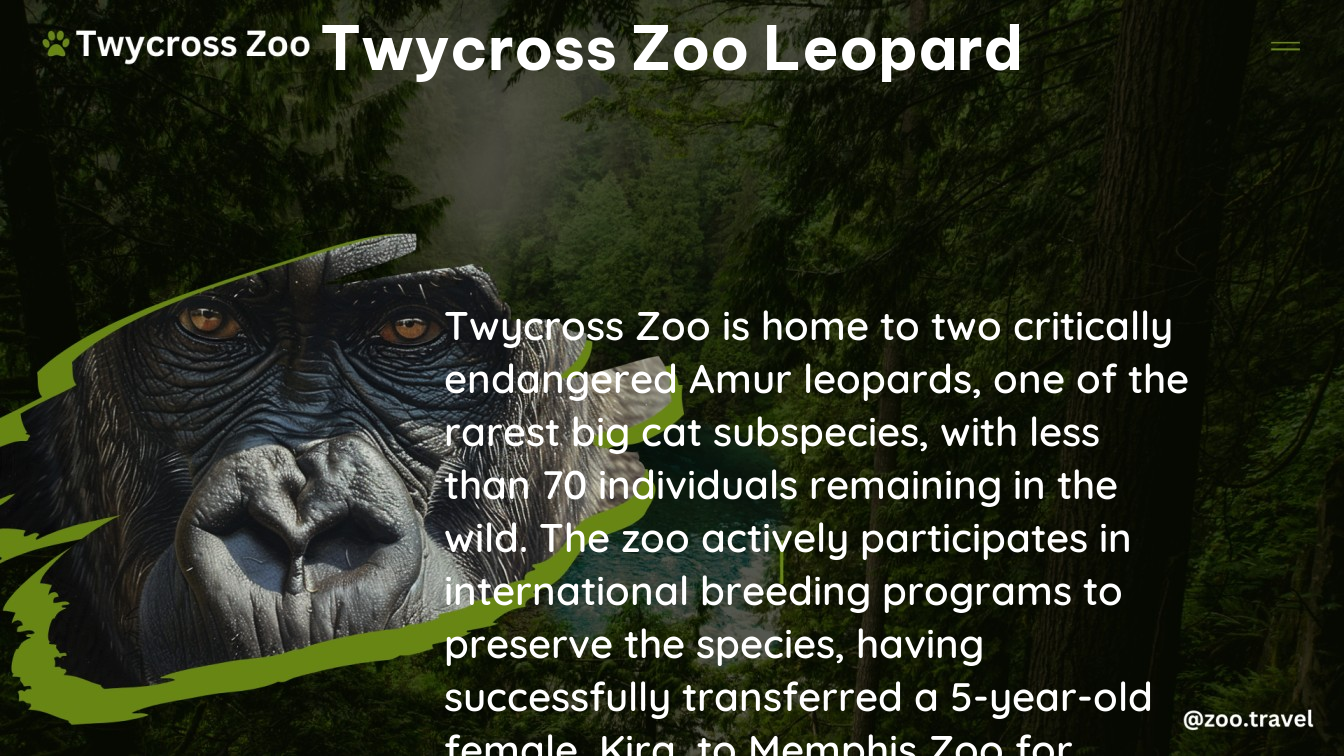Twycross Zoo is home to two critically endangered big cat species, the Snow Leopard and the Amur Leopard. These magnificent creatures are the focus of the zoo’s conservation efforts, as they work to preserve and protect these iconic felines.
The Snow Leopard: The Ghost of the Mountains
The Snow Leopard, also known as the “Ghost of the Mountains,” is a solitary and elusive creature native to the mountainous regions of Central and South Asia. These majestic cats are known for their light fur and long, fluffy tails, which help them balance and provide warmth in their harsh, high-altitude habitats.
Habitat and Behavior
- Snow Leopards can be found at elevations up to 16,400 feet, making them well-adapted to the rugged, mountainous terrain of their native range.
- They are solitary animals, with each individual maintaining a large territory that can span several square miles.
- Snow Leopards are skilled hunters, using their powerful paws and sharp claws to prey on a variety of animals, including wild sheep, goats, and small mammals.
Conservation Status
- The Snow Leopard is currently listed as “Vulnerable” on the IUCN Red List of Threatened Species, due to habitat loss and human-wildlife conflict.
- Twycross Zoo is committed to the conservation of the Snow Leopard, working closely with the European Association of Zoos and Aquaria (EAZA) to support research and protection efforts.
The Amur Leopard: The Rarest Big Cat on Earth

The Amur Leopard is a critically endangered subspecies of the leopard, native to the forested and mountainous regions of eastern Russia. With fewer than 100 individuals remaining in the wild, the Amur Leopard is considered the rarest big cat on the planet.
Habitat and Behavior
- Amur Leopards are adapted to the harsh, cold climate of their native habitat, with thick, spotted fur and powerful bodies.
- They are solitary and territorial, with each individual maintaining a large home range that can span up to 400 square miles.
- Amur Leopards are skilled hunters, using their agility and stealth to prey on a variety of animals, including deer, wild boar, and small mammals.
Conservation Efforts
- Twycross Zoo is actively involved in the conservation of the Amur Leopard, working closely with the EAZA Ex Situ Programme (EEP) to maintain a genetically and demographically healthy population.
- In 2021, Twycross Zoo supported the transfer of a 5-year-old female Amur Leopard, Kira, to a new home at Memphis Zoo as part of an international breeding program.
- The Amur Leopard is the only big cat with a reintroduction program approved by the IUCN, and reintroduced individuals would come from managed breeding programs like the one at Twycross Zoo.
Visiting Twycross Zoo and Supporting Conservation
Visitors to Twycross Zoo can view the Snow Leopard habitat at the Himalaya Centre, adjacent to the zoo’s entrance. The zoo also has an Amazon Wishlist where supporters can purchase items to provide enrichment for the animals and maintain their habitats.
By visiting Twycross Zoo and supporting its conservation efforts, you can play a vital role in the preservation of these magnificent and endangered big cat species. Together, we can ensure that the Snow Leopard and Amur Leopard continue to roam the wild for generations to come.
References:
– Twycross Zoo – Snow Leopard
– Twycross Zoo – Amur Leopard
– Twycross Zoo – On the Move to Memphis
– Twycross Zoo – Animals
